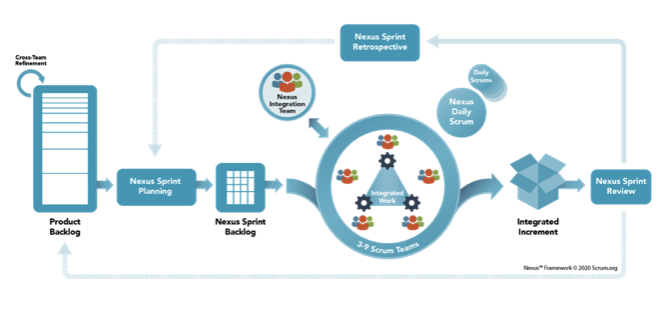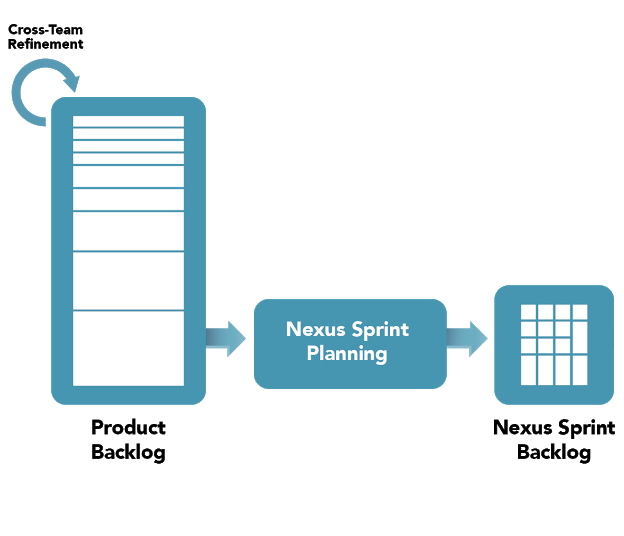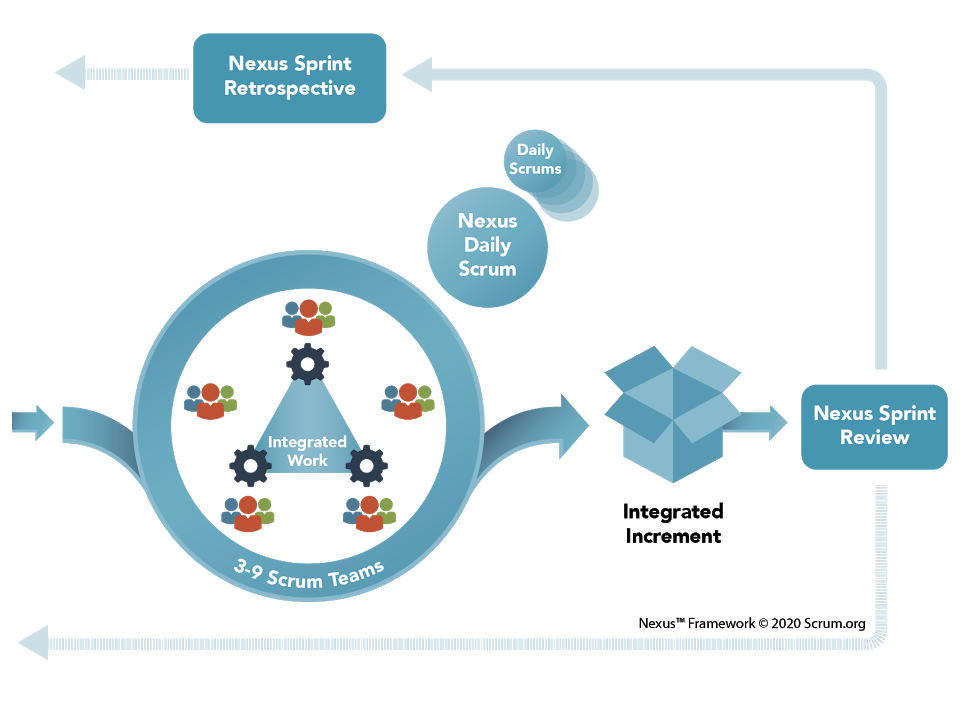The Nexus Framework for Scaling Scrum
Improve and Accelerate Software Delivery for Large, Distributed, Complex Projects
 The Nexus Framework is the simplest, most effective approach to applying Scrum at scale across multiple teams, sites, and time zones. Created by Scrum.org – the pioneering Scrum training and certification organization founded by Scrum co-creator Ken Schwaber – Nexus draws on decades of experience to address the unique challenges teams face in coming together, sharing work, and managing and minimizing dependencies.
The Nexus Framework is the simplest, most effective approach to applying Scrum at scale across multiple teams, sites, and time zones. Created by Scrum.org – the pioneering Scrum training and certification organization founded by Scrum co-creator Ken Schwaber – Nexus draws on decades of experience to address the unique challenges teams face in coming together, sharing work, and managing and minimizing dependencies.
The Nexus™ Framework for Scaling Scrum is a concise book that shows how Nexus helps teams to deliver a complex, multi-platform, software-based product in short, frequent cycles, without sacrificing consistency or quality, and without adding unnecessary complexity or straying from Scrum’s core principles. Using an extended case study, the authors illustrate how Nexus helps teams solve common scaling challenges like reducing cross-team dependencies, preserving team self-organization and transparency, and ensuring accountability.
- Understand the challenges of delivering working, integrated product increments with multiple teams, and how Nexus addresses them
- Form a Nexus around a new or existing product and learn how that Nexus sets goals and plans its work
- Run Sprints within a Nexus, provide transparency into progress, conduct effective Nexus Sprint reviews, and use Nexus Sprint Retrospectives to continuously improve
- Overcome the distributed team collaboration challenges
Click to Receive 35% Discount on Book
2021 Nexus Guide-related changes
In November of 2020, a new release of the Scrum Guide was released. This, in turn, led to a new release of the Nexus Guide in January 2021. At the same time, the Nexus Guide was simplified and specific references to software development were made more general, following the lead of the 2020 Scrum Guide. The following changes to The Nexus Framework for Scaling Scrum are the result.
p. 8 Figure 2-1 is replaced with the following:

p. 9 In Table 2-1, Development Teams is replaced with Scrum Teams. Any subsequent references to Development Team(s), or Development Team Members should also be replaced with Scrum Team(s) and Scrum Team Members.
In Table 2-1, the artifact Product Goal is added.
In Table 2-1, the heading Roles is changed to Accountabilities
In Table 2-1, the event Refinement is changed to Cross-Team Refinement.
p. 10-11 Development Team members on the Nexus Integration Team are now Nexus Integration Team Members.
p. 12-13 The Nexus Event Refinement is now Cross-Team Refinement.
p. 14 Figure 2-4 is replace with the following:

The Nexus event Nexus Sprint Planning no longer prescribes how to plan. Instead, it says that the result of Nexus Sprint Planning is:
- a Nexus Sprint Goal that aligns with the Product Goal and describes the purpose that will be achieved by the Nexus during the Sprint.
- a Sprint Goal for each Scrum Team that aligns with the Nexus Sprint Goal
- a single Nexus Sprint Backlog that represents the work of the Nexus toward the Nexus Sprint Goal and makes cross-team dependencies transparent.
- A Sprint Backlog for each Scrum Team, which makes transparent the work they will do in support of the Nexus Sprint Goal.
p. 16-17 Nexus no longer prescribes how to run the Nexus Sprint Retrospective, nor does it prescribe which questions to ask to facilitate discussions.The practices mentioned here are now considered optional practices.
p. 28 Scrum now prefers the term self-managing over the term self-organizing. The same is true in Nexus.
p. 58 Figure 5-1 is replaced with the following:

p. 68-69 Nexus no longer prescribes specific practices for the Nexus Sprint Retrospective. The practices described here should be regarded as optional, complementary practices.